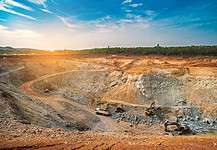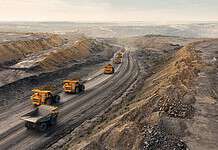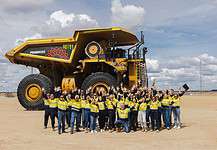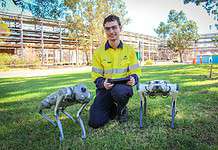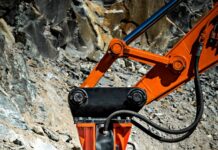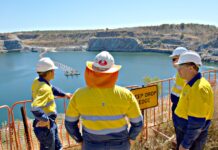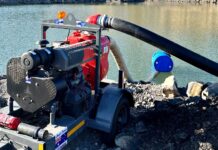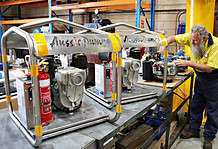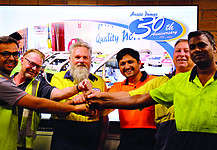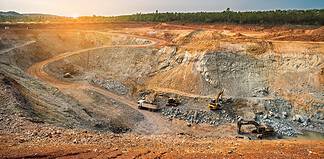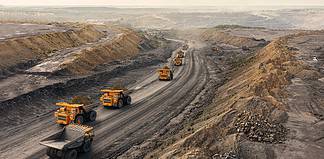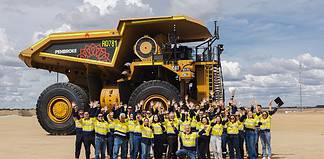MODERN mining is a complex business but its core principles are deceptively simple: dig a commodity out of the ground, process that commodity to the point where it is saleable, and then transport it to the customer.
In most cases the total resource in the ground has a finite value (subject to variations in commodity prices) and every cost associated with extracting that resource over the life of mine, by definition, diminishes net profitability.
The goal then is to focus on cost reduction and production efficiency to increase production, profits and share price.
Assets are a significant cost in every mining operation and their effective management should be a core focus for any mining operation.
Savvy management monitors the return on every asset and realises that plant and equipment should not only be available to contribute to production, but must also be operationally excellent so that each contribution https://de.upscalerolex.to/ is as efficient as possible.
The market will often judge a company more harshly if production and profitability fails to meet expectations and predictions, than if they fall short due to fluctuations in commodity prices.
With this in mind, it makes sense to view asset management from a production standpoint, rather than a financial standpoint.
Putting the right personnel and maintenance processes in place to ensure that assets are maintained at the right time – with the right priority and that maintenance schedules are synchronised procurar por preço de réplica de relógio rolex daytona automático with production schedules – will have far greater and more far-reaching positive effects on production, profitability and market cap than micro-management of isolated cost centres.
Information is power
Designing and implementing optimised maintenance schedules involves the collection of fine data from all assets, the meaningful collation and interpretation of that data, and then modelling that information under a number of price and event-based scenarios.
This combination of real-world measurement and simulated modelling requires a comprehensive and adaptable Enterprise Asset Management (EAM) platform, like Mainpac.
Designed, produced and implemented in Australia, Mainpac’s four main modules were created to provide more than drill-down cost analysis: they deliver unique insights into the daily operation, efficiency and maintenance requirements of mining assets – and more.
Many CFOs are still forced to work with spreadsheets when it comes to asset and maintenance reports.
Apart from the time lag issues of this method, they are forced to drive their operations from a single financial viewpoint, rather than a multi-view operational perspective.
Mainpac’s integrated approach allows real time decisions to be made to compensate for variances in production lines, the implementation of Reliability Centred Maintenance (RCM), the analysis of lease versus buy, the ability to electronically automate inventory, a means to carry out accurate capital budgeting, and a structured and synchronised maintenance schedule for every asset that can lead to working capital savings, by arranging for vendors to hold stock of scheduled maintenance parts rather than buying them into the company’s stock bin.
Asset management
Long term asset viability and life cycles require accurate capital planning and budgeting.
Is it better to lease or own a particular asset? Will that decision change if the market climate changes? Which assets should be parked if commodity prices fall – based on production capabilities, depreciation and other variables?
Mainpac refers to this analysis as asset intelligence (AI), which enables modelling under different scenarios to arrive at preferred options for action in each case.
The software has an asset register that logs both parent and child assets, as well as classification of all assets.
Data logged against each asset and asset class can be used to improve reliability, develop better maintenance and operational practises and reduce operating costs. Analysis of this data will deliver insights that may have previously not been visible.
An efficient operator will log lower fuel usage; there will be less brake and tyre wear; and there will be higher total payloads.
Mainpac’s AI will analyse relevant maintenance and operational data, reporting on inconsistencies and variations so that appropriate corrective action can be taken, delivering asset operational efficiencies and lowered overall costs.
Similarly, if a company operates two fleets of trucks – each of a different brand – the logged data will enable the CFO to compare the service intervals and maintenance costs of one fleet against the other.
When these operating costs are compared to the initial capital costs of the assets, it is possible to make more informed decisions about which trucks to buy when it comes time to replenish a fleet.
Notable rotables
Rotables are a class of asset that typically comprise gearboxes, engines and other parts that are removed from one asset, repaired or serviced and then returned to service in another asset.
Mainpac allows for each of these items to be stored in the asset register and data relating to that part’s initial cost, repair costs and service life is on hand for maintenance staff.
These items can be expensive and are difficult to track from a costing perspective, but significant efficiencies and savings can be made by knowing which parts can be repaired or serviced rather than replaced, and when each part should be retired.
This record-keeping works hand-in-hand with a warranty and inventory.
Parts that fail under warranty can, by definition, be replaced or repaired without cost to the company.
Therefore, a vital part of cost minimisation for all assets, not just rotables, is an accurate management of warranty conditions attached to each item.
Mainpac delivers this function also.
Scheduled servicing
Acquiring data from assets and then analysing and modelling that data in detail – in parallel with production schedule data – enables the development of accurate and timely maintenance schedules.
With Mainpac, maintenance managers are able to configure a work order template for each asset that automatically generates a bill of materials required from stores and opens a work order.
This can also include multiple part storage and automated part counts and be integrated with purchasing to keep regular items in stock at the required time.
Once the work is completed, the work order is closed and the asset is returned to service, with all work carried out logged in the register.
This information can be easily integrated into all major ERPs.
Getting mobile
In most cases it is more efficient for maintenance staff to work on an asset in the field, in order to reduce downtime wherever possible.
By necessity, this means that mobile ‘warehouses’ must be created as service vehicles need to carry parts and tools to carry out that work.
Mainpac’s mobility module allows parts, tools, consumables and other assets to be allocated to an individual service vehicle.
At the end of a shift, the software can determine which parts need to be replenished and also guarantee accountability on all tools taken to the field.
This allows all work done on a particular asset to be justified according to the requirements of a given work order.
Maintenance managers take a great deal of solace from the ability to accurately log and track field work because it provides a record of all maintenance work carried out on each asset and ensures that it is compliant and operationally capable.
The mobility module also has the capability to record condition-based readings for asset monitoring and store photos from inspections for corrosion, fatigue or wear, for example.
As this data is stored against each asset, it can also be used as supporting documentation to create a work order.
Once opened, each work order is flagged and can be inspected by a scheduler who can ensure that no asset is returned to service before all scheduled work has been completed and the work order is closed.
Workshop optimisationBottlenecks can occur in busy workshops when every available bay is full with scheduled repairs and a corrective maintenance job suddenly appears at the door.
A breakdown means that an asset is out of production and that means down-time costs are mounting.
At this point the maintenance manager must decide what is the least expensive and most efficient course of action is to return to full production.
Using Mainpac’s asset information, that manager could determine if, for example, the machines undergoing scheduled maintenance actually has 10pc operation time remaining before it is critical.
It is then possible to make the decision to return that asset to service to maintain full production, while the breakdown is repaired.
The software also prevents over-allocation of maintenance resources, as Mainpac’s maintenance planner will not allow this to happen – thus streamlining the workshop’s workload.
Defend and optimise
Through data acquisition directly from PLC sensors or input from maintenance personnel, Mainpac’s EAM software constantly records the real-world functionality of a mine’s assets.
That data can then be utilised to model future scenarios, compare the Capex and Opex of assets, develop scheduled maintenance programmes and stock fixed and mobile warehouses with essential parts.
Mainpac was developed to deliver complete functional capability for its clients.
It is a single-source stream that is always maintained and always upgradable.
It offers complete management of all fixed and mobile assets with intuitive reporting based on operational and financial considerations.
Mainpac typically delivers cost returns in only 12 to 18 months.
This incredibly powerful system enables mining companies to optimise production efficiency, minimise costs from an operationally-sensitive perspective and ultimately defend their bottom line for greater profits, higher share prices and increased shareholder satisfaction.


